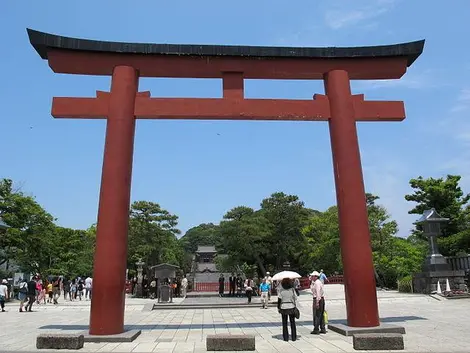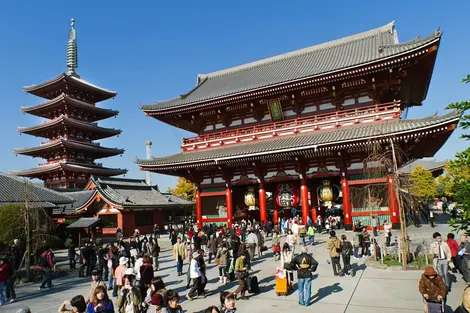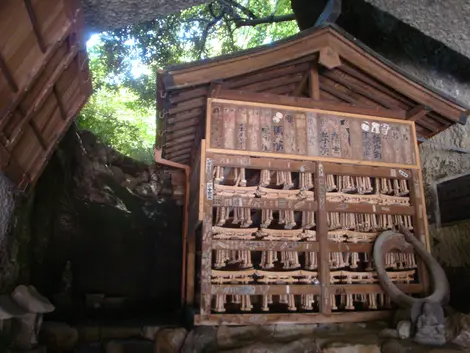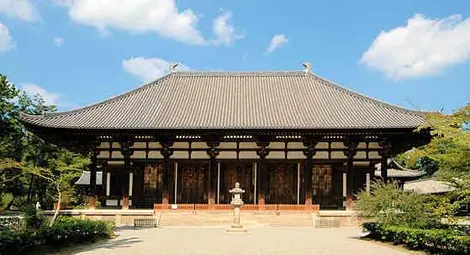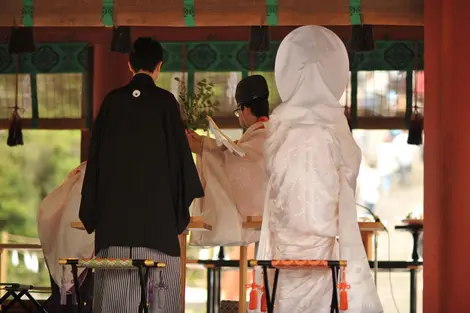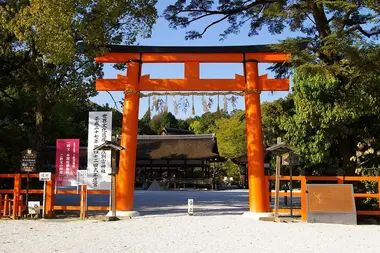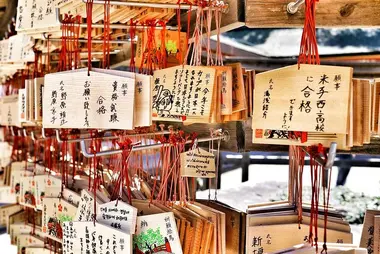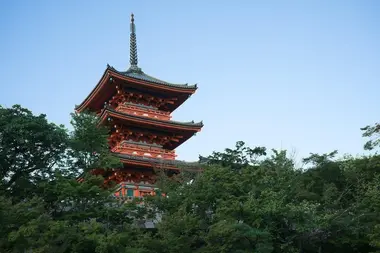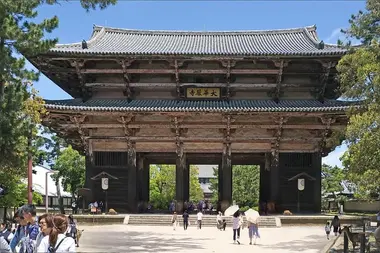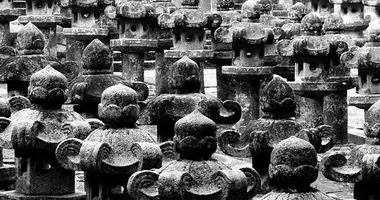The differences between Buddhist temples and Shinto shrines in Japan
- Published on : 17/05/2024
- by : R.A. / J.R.
- Youtube
Japan is home to two major religions that have coexisted for centuries: Shintoism, the indigenous animist religion, and Buddhism, imported from China in the 6th century. Despite a certain historical syncretism, Buddhist temples and Shinto shrines differ in their beliefs, architecture and customs. For the uninitiated visitor, it's not always easy to tell them apart at first glance. However, a closer look reveals a number of distinctive features.
Japan's two major religions are practiced by a large majority of the population. According to statistics for 2021, there will be around 90 million Shintoists and 85 million Buddhists in the country, with many Japanese adhering to both spiritualities. Let's decipher the specific features of the archipelago's temples and shrines, reflecting this religious duality unique in the world.
Origins and beliefs of Buddhism and Shintoism
Shintoism is Japan's oldest religion, dating back to the end of the Jōmon period. Its origins are lost in the mists of time and mythology. It is an animistic, polytheistic cult that worships a multitude of deities called kami, embodying the forces of nature. Mountains, rivers, trees, rocks and animals can all be inhabited by a spirit. This pantheon also includes the deified ancestors of the imperial family, supposedly descended from the sun goddess Amaterasu.
Buddhism was introduced to Japan from China via Korea in the 6th century. Based on the teachings of Buddha, its ultimate goal is to achieve enlightenment and liberation from the cycle of reincarnation. Over the centuries, numerous schools have sprung up in the archipelago, giving rise to a specifically Japanese form of Buddhism. Despite some initial friction, Shintoism and Buddhism long coexisted and even intermingled, until their forced separation in the Meiji era.
Architectural differences between a Buddhist temple and a Shinto shrine
The spatial organization and appearance of Shinto and Buddhist places of worship vary greatly. A Shinto shrine is immediately recognizable by its traditional wooden or stone gate called a torii, often painted vermilion. It marks the entrance to a sacred and pure space, the domain of the kami.
In contrast, access to a Buddhist temple is through an imposing two-tiered portico, the sanmon. It is frequently guarded by two threatening-looking statues of protectors, the niō. The central structure usually houses a statue of Buddha or another Buddhist deity.
A shrine is made up of several buildings with characteristic gabled roofs. The whole is made of natural wood, with little ornamentation. The main shrine (honden) is closed to the public and contains a sacred object representing the kami. The oratory (haiden) is where the faithful come to pray.
Buddhist temples also have several buildings, including the main building (kondō) containing a sacred effigy. A prayer hall allows practitioners to meditate, recite sūtras. A pagoda is often found, a multi-storey tower inherited from Indian religious architecture. Pagodas are generally larger and more lavishly decorated than shrines.
Characteristic elements of Shinto shrines: torii, chôzuya, haiden and honden
In addition to the famous torii at the entrance, there are a number of other features that identify a Shinto shrine. Immediately after passing through the gate, visitors purify themselves at a pavilion housing a basin, the chôzuya: they wash their hands and mouth with a ladle before entering the enclosure.
The heart of a shrine consists of two buildings. The haiden is the prayer hall, open to the faithful. Here, they meditate, make an offering and ring a bell to summon the deity. The honden, reserved for the officiants, holds the object of worship embodying the kami (mirror, relic...). The two buildings are often linked by a covered corridor, the heiden.
Animal statues often guard the sanctuary: the komainu. These are two protective lions placed on either side of the entrance. One is open-mouthed, the other closed, symbolizing birth and death. Messenger foxes (kitsune) are associated with the shrines of Inari, kami of the harvest.
Typical Buddhist temple components: mon, kondō, pagodas, statues and gardens
A Buddhist temple is striking for its monumental architecture. You enter through a two-tiered portal, the sanmon, flanked on either side by intimidating wooden guardians. The kondō is the main hall housing sacred representations of Buddhas and Boddhisattvas. It's not unusual for a huge Buddha to dominate the temple courtyard.
Another distinctive feature is the pagoda. This odd-numbered tower is heir to the Indian stūpa. It serves as a reliquary and symbolizes the stages on the road to enlightenment. The oldest are made of wood, the most recent of stone. Dome-shaped roofs are topped by ornamental pillars.
A temple usually has one or more landscaped gardens, spaces for meditation and contemplation, inviting you to empty yourself. The most famous is undoubtedly the dry garden at Ryōan-ji in Kyoto, the quintessential Zen garden with its carefully raked white gravel carpet and 15 rocks.
Different uses of temples and shrines in Japanese life
Temples and shrines punctuate the lives of the Japanese, who regularly go there to pray, but also to take part in numerous celebrations and rituals. As early as New Year's Eve, they go there to make wishes and draw their annual oracle (omikuji). Shinto shrines traditionally host ceremonies linked to the happy moments of life.
They celebrate birth, children's 3rd, 5th and 7th birthdays (shichi-go-san), and coming of age at 20 (seijin shiki). It's also the ideal setting for Japanese-style weddings. On the other hand, Buddhist temples are associated with mourning, as they often house a cemetery and columbarium within their walls.
The Japanese seek the blessing of Shinto kami for the most auspicious stages of life and positive events: starting university, finding a job, pregnancy, buying a car or a house... Buddhist deities are more often prayed to for the healing of a loved one or success in an exam.
In short, Shintoism and Buddhism cover all aspects of life. Some sanctuaries and temples are specialized and very popular for one type of wish, such as Meiji-jingū in Tokyo, a Mecca for Shinto weddings, or the Yasukuni-jinja, dedicated to the spirits of soldiers who have died for their country.
A singular religious cohabitation in contemporary Japanese society
For centuries, Shintō and Buddhism have formed the spiritual matrix of Japanese society, complementing each other harmoniously. While regular religious practice is becoming less common among the faithful, the vast majority of Japanese continue to attend shrines and temples for major milestones and celebrations, perpetuating millennia-old rituals.
In many Shinto shrines, traces of the historic fusion of the two religions can still be found. Hiyoshi-taisha near Lake Biwa, for example, has twin shrines, one for the Inari kami, the other for a boddhisatva. The famous Itsukushima-jinja in Miyajima incorporates a 5-storey pagoda.
This permeability between Shintoism and Buddhism is also reflected in popular beliefs and superstitions. Many Japanese have a "sacred corner" in their homes, with a Buddhist ancestral altar (butsudan) and a shelf dedicated to the kami (kamidana). Another telling example: Shinto prayer rituals include the use of a rosary, a typically Buddhist object!
All in all, Japan's religious duality offers visitors a fascinating plunge into the heart of the Japanese soul and identity. Between centuries-old traditions and mutual borrowings, Shinto sanctuaries and Buddhist temples are must-sees to grasp the spiritual depth of Japanese culture. Treasures of architecture and history, they are also and above all places of meditation and communion with the sacred, vibrating with a unique energy.
So, whether you're looking for a change of scenery, beauty or serenity, be sure to stop off at these exceptional sites, which reveal the uniqueness of the Japanese faith. To take full advantage of their magic and atmosphere, adopt the appropriate gestures and attitudes, as the Japanese have done since the dawn of time.






